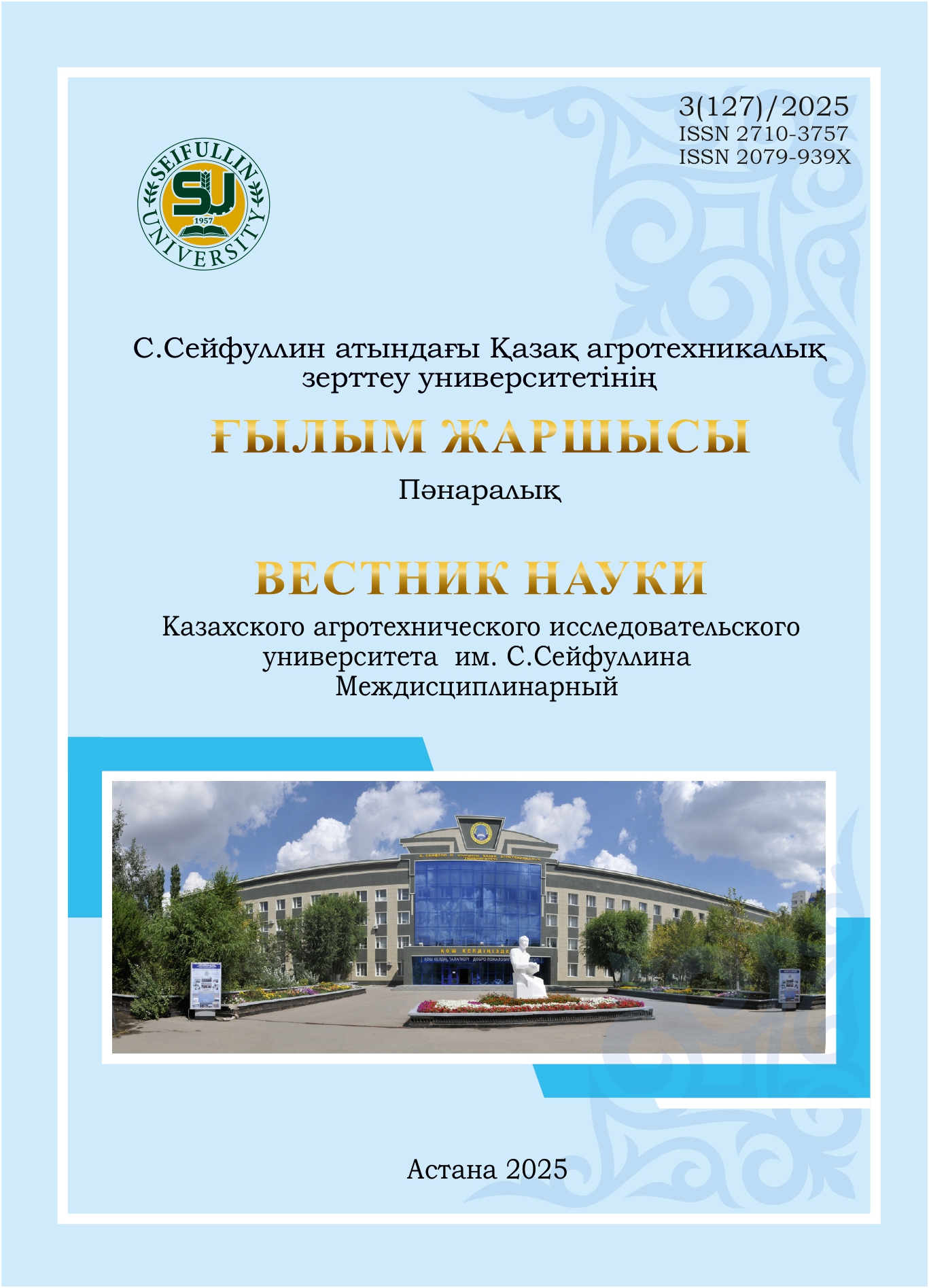Comparative assessment of the effectiveness of crop diversification in the North Kazakhstan region
DOI:
https://doi.org/10.51452/kazatu.2025.3(127).2028Keywords:
diversification; sowing area; crop rotation; crops; cropping structure.Abstract
Background and Aim. One of the key issues addressed by the Concept for the development of the agroindustrial complex of the Republic of Kazakhstan for 2021-2030 is the slow pace of the diversification in crop production. In the main grain–growing regions of the country, monoculture, primarily wheat, prevails. Assessing the overall structure of crops in the North Kazakhstan region in the long term, we can note a relative increase in the area under grain crops (wheat, barley) and leguminous crops (peas, lentils), with a significant decrease in the proportion of oilseeds. The purpose of this study is to provide a comprehensive assessment of the current level and prospects of diversification of agricultural areas in the North Kazakhstan region, with a comparison to the experience of leading agricultural countries.
Materials and methods. The research uses general scientific methods, including description, analysis and synthesis, construction and analysis of dynamic series, as well as systems analysis. A comprehensive evaluation of diversification levels was conducted using statistical data on acreage changes, the sowing structure of individual enterprises in the region, international experience, as well as the results of scientific research on diversification in similar soil and climatic conditions.
Results. The study presents an assessment of the effectiveness, relevance, and current state of diversification, as well as the dynamics of the structure of acreage in the North Kazakhstan region, an assessment of the world experience in the effectiveness of diversification, production-oriented recommendations based on research, as well as the practices of baseline and advanced farms.
Conclusion. Based on the study of the global experience of diversification in countries such as Canada and the Russian Federation, the following principles have been identified: systematic reduction of black fallow in favor of steam reanimating crops, the introduction of crop rotations with legumes and other soil-restoring crops with the inclusion of highly profitable crops focused on specific goals and production conditions. Advanced enterprises of the North Kazakhstan region also practice the experience of the world's leading countries in the agricultural sector, in particular, by completely eliminating black fallow and optimizing the crop structure to achieve a highly profitable ratio.

